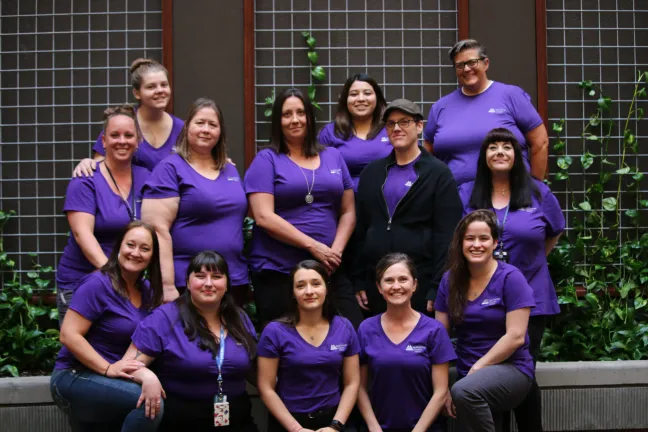This is the first in a series of weekly articles throughout October to share information on domestic violence and our work in the County to address it. Visit our blog or follow us on Twitter and Facebook for updates.
October is Domestic Violence Awareness Month. Domestic Violence Awareness Month has been observed nationally since 1987. The purpose of Domestic Violence Awareness Month is to celebrate survivors, mourn those who lost their lives to domestic violence, and raise awareness and work together to end domestic violence in our community.
Domestic violence takes many forms
Domestic violence can happen to anyone, regardless of race, gender identity, income, religion or place of residence. Domestic violence affects people we know — family members, coworkers, neighbors and friends. Domestic violence is, at its core, about power and control. Survivors may experience physical, emotional or psychological abuse that creates lifelong effects.
How prevalent is domestic violence? Nationally, it is estimated that 1 in 4 women and 1 in 7 men will be victims of domestic violence in their lifetimes. In the last statewide report, which covered 2016, Multnomah County had just under 37,000 people who sought services for domestic violence and 518 single women and people in families who accessed domestic violence shelters.
Domestic violence is a public health emergency. Post-traumatic stress disorder, brain injury, physical injuries and sexual assault are extremely prevalent among survivors. On average, 55 percent of homicides of women in this country are attributed to domestic violence. Last year in Oregon, at least 29 people, including children, were murdered as a direct result of domestic violence.
Annually, 1 in 15 children witness domestic violence in their home. In an estimated 30 to 60 percent of cases, the children are also subject to abuse from the perpetrator. This exposes children to an increased risk of abuse later in life and leads to a lifetime of toxic stress, which negatively affects physical and mental health, learning, and emotional development.
Multnomah County's Domestic Violence Response and Prevention Work
In Multnomah County, the Domestic and Sexual Violence Coordination Office works with a wide range of partners — including law enforcement, the District Attorney's Office, the Department of Community Justice, Multnomah County Courts, the Joint Office of Homeless Services, the State of Oregon, and a variety of service providers — to respond to, or prevent, domestic violence.
The Domestic and Sexual Violence Coordination Office funds several service programs, including on-site advocates who work with police, mobile advocacy work, legal services, shelters, crisis lines, culturally specific programs, housing assistance, and training and technical assistance.
We invite you to visit our webpage to learn more about resources available to survivors and County staff.
Everyone can take a role in preventing domestic violence
Anyone in Multnomah County can help us address domestic violence. Here are some ways you can help:
- Wear purple: Domestic and Sexual Violence Coordination Office staff and allies are wearing purple every Wednesday in October to highlight Domestic Violence Awareness Month. You may consider doing the same in your own life.
- Participate in a community event for Domestic Violence Awareness Month. Events will be posted through the Department of County Human Service's Facebook and Twitter pages.
- Consider donating to a local organization that's working to end domestic violence.

